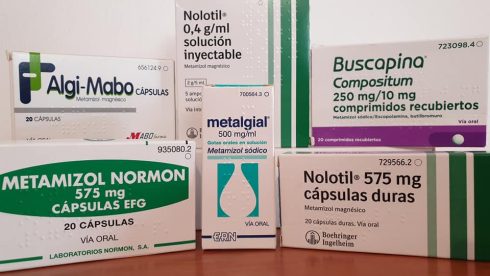THIS is what science says about infamous Spanish painkiller Nolotil after being linked to multiple British fatalities.
In Spain, Nolotil (metamizole) is a trusted choice for moderate pain, particularly post-surgery and in cancer patients, as it’s stronger than ibuprofen yet considered relatively safe.

However, for British and Irish visitors, this seemingly harmless remedy carries a deadly risk. While approved for use in Spain and a handful of other countries, Nolotil is outright banned in the UK, US, and 40 other countries due to its link to a rare but often fatal condition: agranulocytosis, an uncommon and potentially fatal drop in white blood cells that leaves the body vulnerable to deadly infections.
Over recent years, cases have surfaced of British and Irish tourists suffering severe reactions, and even fatalities, after taking Nolotil.
Previous Olive Press reports have spotlighted several tragic cases, spurring calls for increased regulation.
So, what makes Nolotil uniquely dangerous? Why are British, Irish and Scandinavian individuals seemingly more susceptible?
The science behind this is murky, but two main theories aim to explain the drug’s risky effects. One is the immune theory, which suggests that metamizole may trigger the immune system to produce antibodies only when the drug is present.
These antibodies then mistakenly attack white blood cells, weakening the immune system and leaving the body vulnerable to infections.
Studies on metamizole suggest that Nolotil’s breakdown products could act as ‘haptens’ — small molecules that stick to white blood cells and cause an immune response, leading to white-blood cell destruction.
This could explain why the reaction risk varies by age or gender, as these groups may break down the drug differently.
But recent research challenges this immune-based explanation.
Notably, the largest genetic study to date on metamizole, involving 86 patients, did not find a link between immune-related genes and Nolotil-related agranulocytosis, unlike other drugs known to cause similar reactions.
Instead, these researchers found genetic variants on chromosome 9 in patients from Spain, Germany and Switzerland who were treated for metamizole induced agranulocytosis.
This gene is linked to antioxidant pathways and blood cell production, suggesting a new and not yet researched genetic link to Nolotil risk.
While Nolotil is generally considered safe—with fewer side effects reported than ibuprofen or paracetamol—the cases of agranulocytosis have been rising.
In Germany, reports jumped from around 10 cases in 1990 to over 50 by 2012.
This increase may be due to the drug’s growing popularity and off-label use, often in outpatient settings, where severe side effects can go unmonitored and untreated.
Doctors continue to argue that the benefits of Nolotil outweigh its risks, particularly given its lower organ toxicity and side effects compared to opioids.
However, experts caution that metamizole should be used only in closely monitored settings, as prompt antibiotic treatment is essential if agranulocytosis occurs.
The concern remains: while metamizole can effectively relieve pain, it also poses significant risks for certain individuals, especially among vulnerable populations like British and Irish tourists in Spain.
Is it responsible to provide patients with a potentially hazardous drug when the risks, and genetic links to its dangerous side effects are still not fully understood?
Sources:
Safety of metamizole (dipyrone) for the treatment of mild to moderate pain—an overview of systematic reviews | Naunyn-Schmiedeberg’s Archives of Pharmacology
Metamizole-induced agranulocytosis (MIA): a mini review | Molecular and Cellular Pediatrics
Genome-Wide Association Study of Metamizole-Induced Agranulocytosis in European Populations









